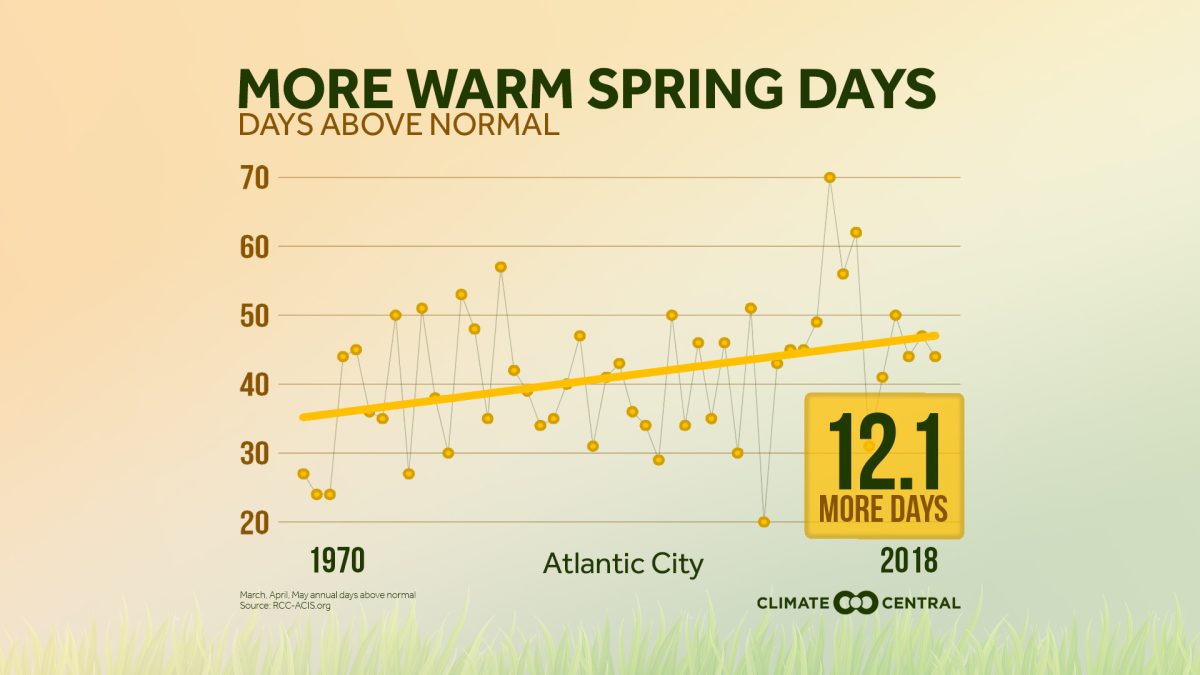On May 20, 2019, it felt like summer in New Jersey. Atlantic City registered a high of 90 degrees, just three degrees below the record for that date.
But it’s not just a one day blip. Across the country, the number of above-average, warm spring days are increasing.
According to an analysis of 242 cities by Climate Central, 97% have recorded an increase in warm spring days since 1970. And this has a host of implications.
The extra heat accelerates the evaporation that can lead to drought and stressed water supplies, affecting agriculture and energy systems as well as cities and towns.
Nationwide impacts of warm springs include longer pollen and pest seasons. As the spring and fall have brought more warm days, the growing season (and therefore allergy season) has lengthened by two weeks on average. Longer pollen seasons are affecting more and more Americans, as the rates of hay fever and asthma have nearly tripled in the last few decades.
While a longer growing season may help some farmers, the ranges of familiar crops are shifting north. Warmer springs are also increasing the demand for air conditioning, driving up energy costs in some areas. And disease-carrying pests like mosquitoes and ticks are coming out earlier as well.







